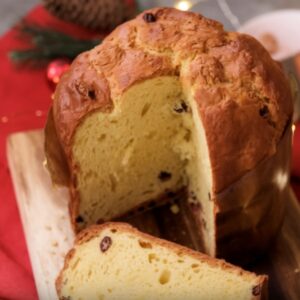
Traditional Panettone with Active Dry Yeast
Panettone is a classic Italian Christmas bread, a tall and airy loaf dotted with raisins and candied citrus. Making it at home is a time-intensive process, but it's definitely worth it for an amazing Italian Christmas dessert!
Equipment
- Mixing bowls
- Stand mixer with dough hook attachment
- Plastic wrap
- Baking sheet
- Dough scraper
- Panettone mold (750g) or high-sided 8-inch cake pan lined with parchment paper extending above the rim
- Sharp knife or razor blade
- Long metal skewers
- Cooling rack
Ingredients
For the Biga (Starter):
- 1/3 cup 45g bread flour (high-protein)
- 1/2 teaspoon 1.5g active dry yeast
- 1 teaspoon 5g honey or sugar
- 2 tablespoons 30ml whole milk, at room temperature
For the First Dough:
- 1 cup 130g all-purpose flour
- 1/4 cup 35g bread flour (high-protein)
- 1 teaspoon 3g active dry yeast
- 2 large eggs room temperature
- 3 tablespoons 40g sugar
- 3 tablespoons 42g unsalted butter, softened
For the Second Dough:
- 3/4 cup 100g all-purpose flour
- 1 large egg room temperature
- 2 egg yolks room temperature
- 1/4 cup 50g sugar
- 3 tablespoons 42g unsalted butter, softened
- Zest of 1 lemon
- Seeds from 1 vanilla bean or 1 teaspoon pure vanilla extract
- 1/4 cup 40g candied orange peel, diced
- 1/4 cup 40g candied lemon peel (or more candied orange peel), diced
- 1/3 cup 50g raisins
- 1/2 teaspoon 3g salt
For Baking:
- 1 tablespoon 14g unsalted butter
Instructions
- Prepare the Biga: In a mixing bowl, combine the bread flour, yeast, honey (or sugar), and room-temperature milk. Mix until a firm dough forms. Knead for a few minutes to ensure everything is well incorporated. Cover with plastic wrap and let it rest at room temperature for 1 hour. Then refrigerate for 12 hours to mature.1/3 cup 45g bread flour (high-protein), 1/2 teaspoon 1.5g active dry yeast, 1 teaspoon 5g honey or sugar, 2 tablespoons 30ml whole milk, at room temperature
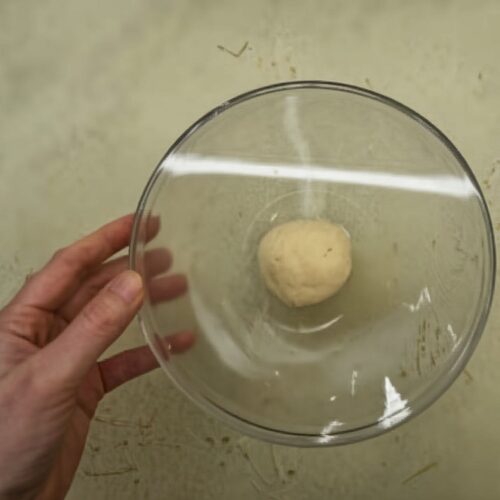
- Make the First Dough: Remove the matured biga from the fridge. In a stand mixer, combine it with the all-purpose flour, bread flour, and yeast. Gradually add the beaten eggs while mixing. Add the sugar and continue to mix. Once incorporated, add the softened butter, one tablespoon at a time. Knead until the dough is smooth and elastic. Transfer to a greased bowl, cover, and let rise for 1 hour at room temperature. Refrigerate for another 12 hours.1 cup 130g all-purpose flour, 1/4 cup 35g bread flour (high-protein), 1 teaspoon 3g active dry yeast, 2 large eggs, 3 tablespoons 40g sugar, 3 tablespoons 42g unsalted butter, softened
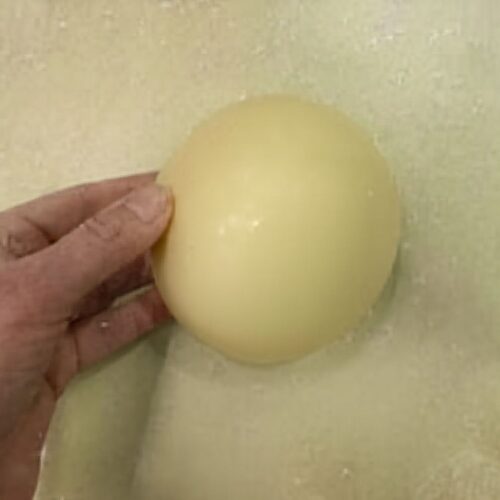
- Make the Second Dough: Remove the first dough from the fridge and let it come to 78-82°F for about 2 hours. Rinse and soak the raisins until plump. Drain and set aside. In the mixer, add the first dough, all-purpose flour, sugar, beaten egg, egg yolks, lemon zest, and vanilla seeds. Mix well. Add the salt and continue mixing. Gradually add softened butter, ensuring each piece is fully absorbed before adding the next.3/4 cup 100g all-purpose flour, 1 large egg, 2 egg yolks, 1/4 cup 50g sugar, 3 tablespoons 42g unsalted butter, softened, Zest of 1 lemon, Seeds from 1 vanilla bean or 1 teaspoon pure vanilla extract, 1/2 teaspoon 3g salt
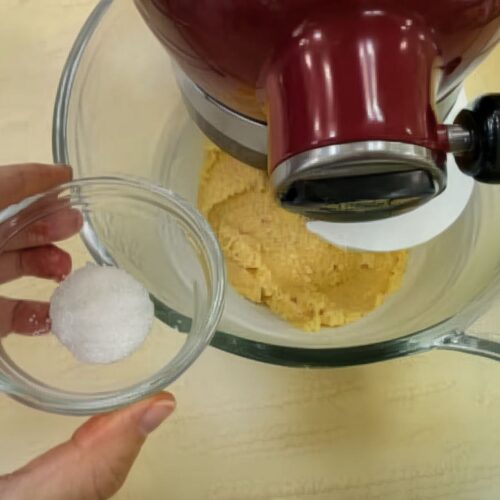
- Incorporate the Fruit: Once the dough is fully mixed, fold in the diced candied orange, candied citron, and soaked raisins. Mix until the fruit is evenly distributed throughout the dough.1/4 cup 40g candied orange peel, diced, 1/4 cup 40g candied lemon peel (or more candied orange peel), diced, 1/3 cup 50g raisins
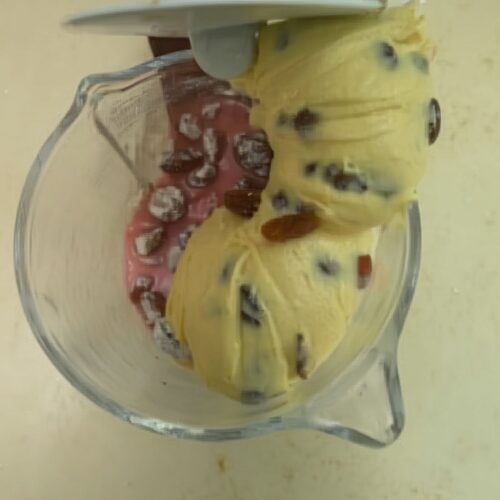
- Shape the Dough: Transfer the dough to a lightly floured surface. Fold and stretch the dough several times, then shape it into a smooth ball by rotating it on the surface. Place the dough into a 750g panettone mold.
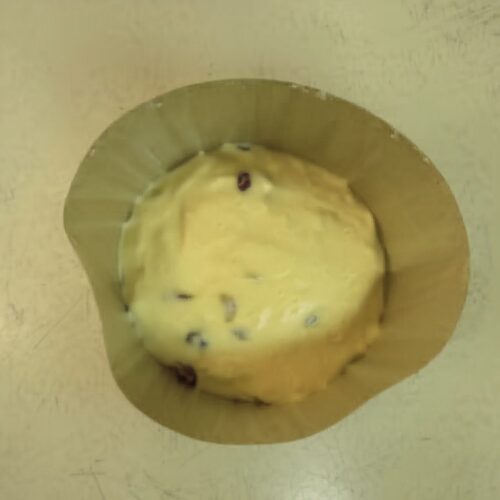
- Proof the Dough: Cover the panettone mold with plastic wrap and let the dough rise at room temperature for 3 hours or until it's 2 inches from the top of the mold. Uncover and let it sit for 30 minutes to form a thin skin.
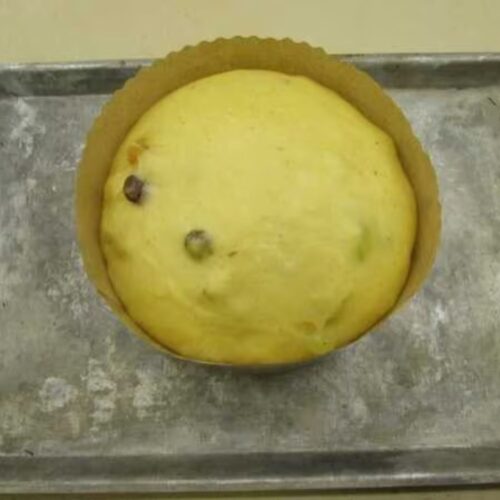
- Bake the Panettone: Preheat the oven to 350°F. Score a cross on the top of the dough with a sharp knife. Place a small pat of butter in the center of the cross. Bake on the lowest rack for 50 minutes, using a baking sheet on the top rack to prevent over-browning.1 tablespoon 14g unsalted butter
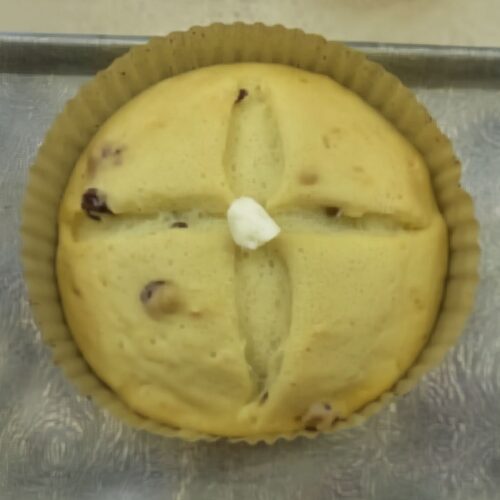
- Remove the Panettone: Once the panettone is baked, take it out of the oven carefully.
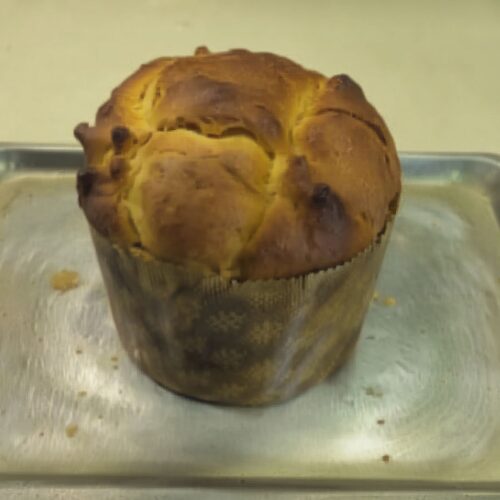
- Pierce and Cool the Panettone: Pierce the bottom with two long skewers and hang it upside down between two tall objects, like two pots, to cool for 6 hours. This prevents the bread from collapsing as it cools.
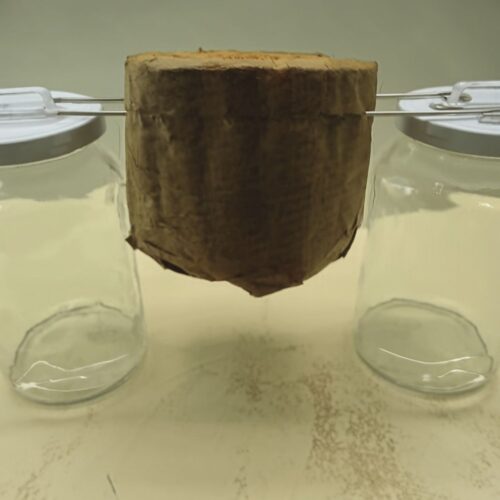
- Congratulations! You've made your first authentic panettone, just like in Italy! Taste it, and you'll immediately see that all the effort you put in was well worth it. Let me know in the comments how it turned out!
